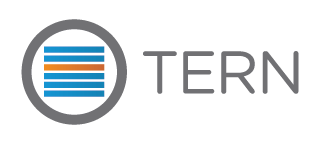Tern is a software package inspection tool for containers. It's written in Python3 with a smattering of shell scripts.
- Introduction
- Getting Started
- Using Tern
- Report Formats
- Extensions
- Running tests
- Project Status
- Contributing
Tern is an inspection tool to find the metadata of the packages installed in a container image. The overall operation looks like this:
- It uses overlayfs to mount the first filesystem layer (also known as the BaseOS) used to build the container image
- It then executes scripts from the "command library" in a chroot environment to collect information about packages installed in that layer
- With that information as a starting point, it continues to iterate over steps 1 and 2 for the rest of the layers in the container image
- Once done, it generates a report, various format options are available. The report, in its default format, provides a verbose, layer by layer, explanation of the various software components imported. If a Dockerfile is provided, the report indicates the Dockerfile lines corresponding to each of the file system layers.
Tern gives you a deeper understanding of your container's bill of materials so you can make better decisions about your container based infrastructure, integration and deployment strategies. It's also a good tool if you are curious about the contents of the container images you have built.
Note MAC users: currently running Tern natively as a docker container is unsupported. An option is to launch a linux virtual machine (VM) on your MAC and from within follow the steps below.
Docker is the most widely used tool to build and run containers. If you already have Docker installed, you can run Tern by building a container with the Dockerfile provided and the docker_run.sh script:
Clone this repository:
$ git clone https://github.com/vmware/tern.git
Build the Docker image (called ternd here). You may need to use sudo:
$ docker build -t ternd .
Run the script docker_run.sh. You may need to use sudo. In the below command debian is the docker hub container image name and buster is the tag that identifies the version we are interested in analyzing.
$ ./docker_run.sh workdir ternd "report -i debian:buster" > output.txt
To produce a json report run
$ ./docker_run.sh workdir ternd "report -f json -i debian:buster"
What the docker_run.sh script does is create the directory workdir if not present in your current working directory and run the built container as privileged with workdir bind mounted to it.
WARNING: privileged Docker containers are not secure. DO NOT run this container in production unless you have secured the node (VM or bare metal machine) that the docker daemon is running on.
Tern is not distributed as Docker images yet. This is coming soon. Watch the Project Status for updates.
Vagrant is a tool to setup an isolated virtual software development environment. If you are using Windows or Mac OSes, this is the best way to get started as Tern does not run natively in a Mac OS or Windows environment at this time.
Follow the instructions on the VirtualBox website to download VirtualBox on your OS.
Follow the instructions on the website to install Vagrant for your OS.
In your terminal app, run the following commands.
Clone this repository:
$ git clone https://github.com/vmware/tern.git
Bring up the Vagrant box:
$ cd tern/vagrant
$ vagrant up
SSH into the created VM:
$ vagrant ssh
Run:
$ tern -l report -i debian:buster -o output.txt
If you have a Linux OS you will need a distro with a kernel version >= 4.0 (Ubuntu 16.04 or newer or Fedora 25 or newer are good selections) and will need to install the following requirements:
- Git (Installation instructions can be found here: https://git-scm.com/book/en/v2/Getting-Started-Installing-Git)
- attr (sudo apt-get install attr or sudo dnf install attr)
- Python 3.6 or newer (sudo apt-get install python3.6(3.7) or sudo dnf install python36(37))
- Pip (sudo apt-get install python3-pip).
Some distro versions have all of these except attr preinstalled but attr is a common utility and is available via the package manager.
For Docker containers
- Docker CE (Installation instructions can be found here: https://docs.docker.com/engine/installation/#server)
Make sure the docker daemon is running.
Create a python3 virtual environment:
$ python3 -m venv ternenv
$ cd ternenv
NOTE: Your OS might distribute each Python version separately. For example, on Ubuntu LTS, Python 2.7 is linked to python2 and Python 3.6 is linked to python3. I develop with Python 3.7 which is installed separately with no symlinks. In this case, I use the binary. The binaries are usually installed in /usr/bin/python.
Activate the virtual environment:
$ source bin/activate
NOTE: This specific activate script only works for Bash shells. If you need to activate a Fish Shell or C Shell you should use source/bin/activate.fish or source/bin/activate.csh, respectively.
Install tern:
$ pip install tern
Run Tern:
$ tern -l report -o output.txt -i debian:buster
WARNING: The CLI has changed since the last release. Visit Tern's PyPI project page to find the correct CLI options or just run tern -h.
Tern creates a report containing the Bill of Materials (BoM) of a container image, including notes about how it collects this information, and files for which it has no information about. Currently, Tern supports only containers built using Docker. This is the most ubiquitous type of container image that exists so the project started with a focus on those. However, it is architected to support other images that closely follow the OCI image spec.
If you have a Docker image pulled locally and want to inspect it
$ tern -l report -i debian:jessie
Take a look at report.txt to see what packages are installed in the Docker image and how Tern got this information. If you encounter any errors, please file an issue.
You can provide a Dockerfile to Tern to figure out the Bill of Materials and other information. Tern will build the image, analyze it with respect to the Dockerfile and discard the image. This is useful to engineers who are developing a Dockerfile for their app or in a container build and release pipeline.
$ tern -l report -d samples/photon_git/Dockerfile
Take a look at report.txt to see what packages you would be shipping if you were to use the given Dockerfile. Feel free to try this out on the other sample Dockerfiles in the samples directory or on Dockerfiles you may be working with. If it doesn't work for you, please file an issue.
Tern creates BoM reports suitable to read over or to provide to another tool for consumption.
The default report Tern produces is a human readable report. The object of this report is to give the container developer a deeper understanding of what is installed in a container image during development. This allows a developer to glean basic information about the container such as what the true base operating system is, what the app dependencies are, if the container is using an official or personal repository for sources or binaries, whether the dependencies are at the correct versions, etc.
$ tern -l report -i golang:1.12-alpine -o output.txt
To get just a list of packages, you can use the -s option to get a summary report. This is useful to provide to a legal or OSS compliance team.
$ tern -l report -s -i golang:1.12 -f output.txt
WARNING: Tern is meant to give guidance on what may be installed in a container image. We recommend that you use the default report format for the purpose of investigation.
You can get the results in a JSON file to pass around in a network.
$ tern report -f json -i golang:1.12-alpine
You can get the results in a YAML file to be consumed by a downstream tool or script.
$ tern -l report -f yaml -i golang:1.12-alpine -o output.yaml
SPDX is a format developed by the Linux Foundation to provide a standard way of reporting license information. Many compliance tools are compatible with SPDX. Tern follows the SPDX specifications specifically the tag-value format which is the most compatible format with the toolkit the organization provides. The tag-value format is the only SPDX format Tern supports. There are conversion tools available here (some still in development). You can read an overview of the SPDX tag-value specification here and about how Tern maps its properties to the keys mandated by the spec here.
$ tern -l report -f spdxtagvalue -i golang:1.12-alpine -o spdx.txt
Tern does not have its own file level license scanner. In order to fill in the gap, Tern allows you to extend container image analysis with an external file analysis CLI tool or Python3 module.
scancode-toolkit is a license analysis tool that "detects licenses, copyrights, package manifests and direct dependencies and more both in source code and binary files".
- Setup a python virtual environment
$ python3 -m venv scanenv
$ cd scanenv
$ source bin/activate
- Install tern and scancode
$ pip install tern scancode
- Run tern
$ tern -l report -x scancode -i golang:1.12-alpine
cve-bin-tool is a command line tool which "scans for a number of common, vulnerable components (openssl, libpng, libxml2, expat and a few others) to let you know if your system includes common libraries with known vulnerabilities". Vulnerability scanning tools can also be extended to work on containers using Tern, although support for certain metadata pertaining to CVEs may not be available yet. As a result, you will not see any of the results in the generated reports. To try it out, run:
$ tern -l report -x cve_bin_tool -i golang:1.12-alpine
WARNING: The test_util_* tests are not up to date. We are working on it :). From the Tern repository root directory run:
$ python tests/<test file>.py
Release 1.0.0 was released at the beginning of November. A follow-up release, v1.0.1, was made available at the beginning of December to address a regression found when running Tern in a Docker container.
See the release notes for more information. See the update notes for patches on top of this release.
We try to keep the project roadmap as up to date as possible. We are currently working on Release 1.1.0.
Architecture, function blocks, code descriptions and the project roadmap are located in the docs folder. Contributions to the documentation are welcome! See the contributing guide to find out how to submit changes.
Do you have questions about Tern? Do you think it can do better? Would you like to make it better? You can get involved by giving your feedback and contributing to the code, documentation and conversation!
Please read our code of conduct first.
Next, take a look at the contributing guide to find out how you can start.


